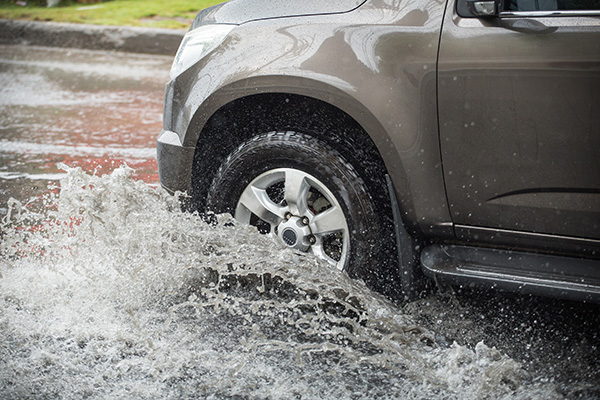
Driving on wet roads can be stressful, especially when you consider the risk of hydroplaning. Hydroplaning occurs when your tires lose contact with the road due to a layer of water, causing a loss of traction. This dangerous situation can make steering and braking nearly impossible. Fortunately, there are steps you can take to minimize the chances of hydroplaning and keep yourself safe. Let’s explore seven practical tips to help you stay in control when the rain starts pouring.
1. Maintain Proper Tire Tread Depth
Your tires are your vehicle’s first line of defense against hydroplaning. Worn-out tires with shallow tread cannot effectively channel water away from the road surface, increasing the risk of losing traction. Regularly check your tire tread depth and replace your tires when necessary. A quick way to do this is by using the penny test—if you can see the top of Lincoln’s head when placing a penny into the tread grooves, it’s time for new tires.
2. Reduce Your Speed During Rainy Conditions
Driving too fast on wet roads is one of the leading causes of hydroplaning. When rain begins to fall, it mixes with oil and debris on the road, creating slippery conditions. Slowing down gives your tires more time to maintain contact with the road and reduces the likelihood of hydroplaning. Remember, most vehicles are at higher risk of hydroplaning when driving over 35 mph.
3. Avoid Sudden Movements
Abrupt turns, hard braking, or rapid acceleration can disrupt your vehicle’s balance and increase the chances of hydroplaning. Gentle inputs on the steering wheel and brakes will help maintain control. If you need to stop, apply your brakes steadily rather than slamming them.
4. Keep Your Tires Properly Inflated
Underinflated tires reduce your car’s ability to handle wet roads effectively. Check your tire pressure regularly and ensure it matches the manufacturer’s recommended levels. Overinflation, on the other hand, can decrease the tire's contact patch with the road, so aim for the sweet spot. Proper tire pressure not only improves safety but also extends tire life.
5. Stay Away from Puddles and Standing Water
Puddles and areas of standing water are prime spots for hydroplaning. Water deeper than your tire tread can lift your vehicle off the road surface. Stick to the middle lanes of the road, as water tends to accumulate on the outer edges. If you can’t avoid a puddle, drive through it slowly and avoid any sudden movements.
6. Use Cruise Control Cautiously
While cruise control can make long drives more comfortable, it’s best to avoid using it on wet roads. Cruise control maintains a consistent speed, which can be dangerous if you suddenly encounter standing water. Turning it off allows you to react faster and adjust your speed as needed.
7. Ensure Proper Vehicle Maintenance
Beyond tires, your vehicle’s braking and suspension systems play a significant role in how well it handles wet conditions. Worn-out brake pads or shock absorbers can compromise safety during rain. Additionally, windshield wipers in good condition are essential for visibility. Regular vehicle inspections by a trusted repair shop ensure that all systems are functioning as they should, reducing the risks associated with hydroplaning.
Don’t let wet roads catch you off guard! Visit Sunny Service Center in Margate City, NJ, for a complete tire and safety inspection. Our team will ensure your vehicle is ready to handle any weather conditions with confidence. Call today to book an appointment!